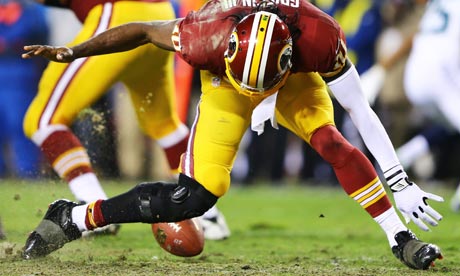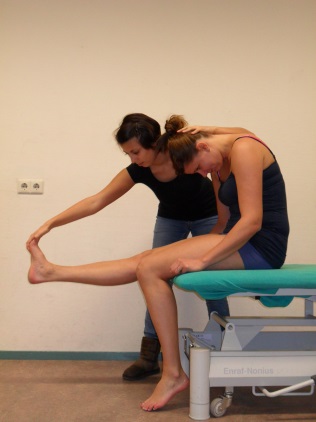
Athletes! Why do you keep getting injured or have reoccurring niggles?

Although maybe not as serious as the injury shown above, pictured Robert Griffin and the injury of his ACL, why is it that the top athletes that are classed as the fittest in the world still get injured?
Yes with impact sport this is more likely, but however as you can see in the above picture there is no element of contact involved in this injury. This can be the same as a hamstring strain or an Achilles tendon rupture.. It is the shear imbalance of forces that cause this to happen. It is also a lot more common in the lower limb rather than the upper limb.
If you’ve got an injury or had an injury in the past it is important to look at the whole picture in the frame, not just the one focussed area.
– Neurodynamics
– Biomechanics
– Core stability/ neuromuscular control/ lumbar spine strength
– Stretch/relaxation/yoga
– Hamstring to quadriceps ratio
We are educated on the perfect biomechanics, but lets face it the majority of the population will have something wrong…. For example an anteriorly tilted pelvis which is a result of tight hips which is very common in athletes, which then increases the constant length that your hamstrings are having to maintain, making them more vulnerable to injury dues to the constant over load of them. Another example would be having a weak gluteus medius which control the external rotation of the hip. If this is not strong it will allow your leg to collapse in when running making the scenario above slightly more likely, as well as a quadripes and hamstring muscle power imbalance.
Another example is tight adductors, which evidence has also shown to prove that it makes the hamstring more vulnerable to being susceptible to injury
Pronation of the feet (flat feet) is another that will cause more pressure on the inside of the knee potentially putting more strain on the medial collateral ligament.
The reasoning for all these examples is to home in on the importance of not just focussing on the knee or the ankle or the hamstring but the whole picture.
As a professional athlete you will have help with all of this, but if you’re a recreational tennis player or rugby player it is something you’re going to have to be aware of yourself and be able to manage alongside playing the sport and your working life. Any of you have reoccurring hamstring niggles or knee problems that are stopping you from being able to play and enjoy the whole season? Try and follow these simple steps….
1) Make time for strength and gym work, NOT just your training sessions 1-2 times a week. You weight lifters, yes weight is good for your strength, but it is also important to concentrate on you balance and core as this is in high demand when you’re playing sport at speed and changing direction. Even some of the top athletes don’t have this right and don’t do enough or your low level core/ pilates exercises. Guys you may think this is for girls, but it’s not, it is important for you to be able to maintain an all round fitness.
2) Postural awareness in sitting, standing and walking: you can easily have this assessed or looked at by a Physiotherapist that will give you the exact areas that you need to work on and the correct strengthening exercises. Recreational athletes I know a lot of you tend to have a desk job when not playing sport, so it important that you are posture aware so it doesn’t affect you when playing sport.
3) Balance your push pull exercises in the gym or if anything work slightly more your posterior chain as used less in everyday life and harder to maintain: glutes, hamstring and mid to lower back. For example if this isn’t an area that you focus on you’ll be more quad dominant when running and an example like pictured above may happen as the deceleration of the hamstring didn’t come into play enough, causing the shift in the knee to put pressure through the ligaments in the knee.
4) Make time to cool down.
5) If you’re feeling tight through your muscles, for example down the back of your leg is this just muscle tightness or is it neural tension? There are different tests that can be used to test this: slump test is one, see below.
If you feel pain or the ‘stretch’ that you feel when doing this test it is likely that you are neutrally tight, not just the muscle.
6) Have an active recovery day. Swimming… If you don’t enjoy swimming as I know it’s not for everyone try yoga… Again guys I know it might not sound like something that is up your street, but there are different variations and hot yoga is always good to make you feel like you’ve had slightly more of a work out from sweating. This will just allow you to focus on stretching out your muscles and giving them the TLC they need especially with the weather conditions becoming a lot harsher in the last couple of weeks.
Summery:
– Warm up
– Cool down
– Posture awareness
– Reduce neural tension
– Seek advice from a physio
– Active recovery day
– Strength training 1 times per week minimum, to include balance and core.
– Work muscles evenly




